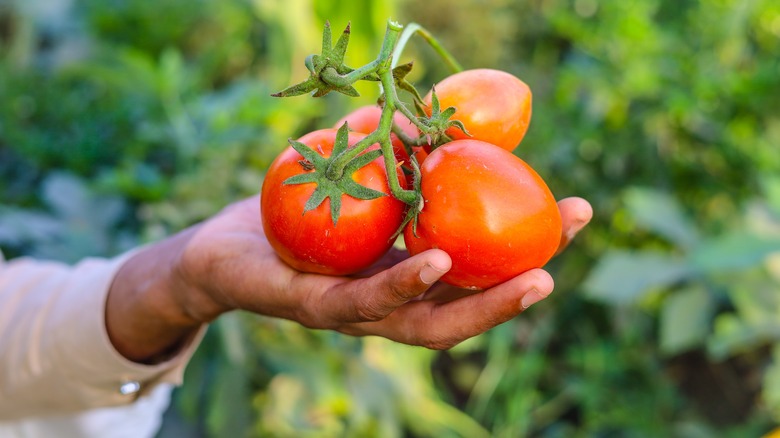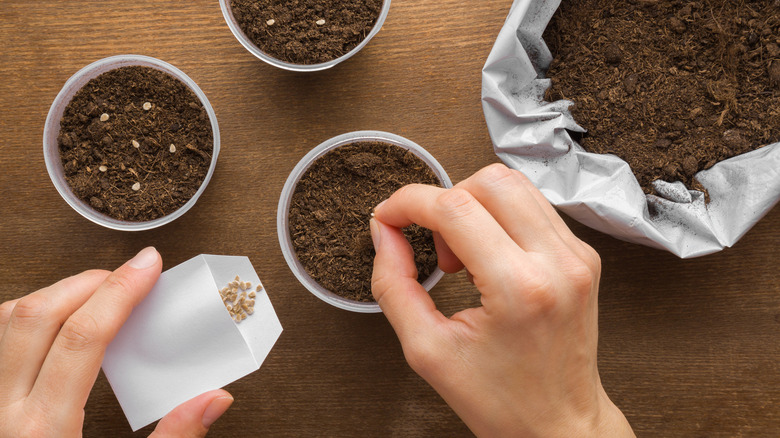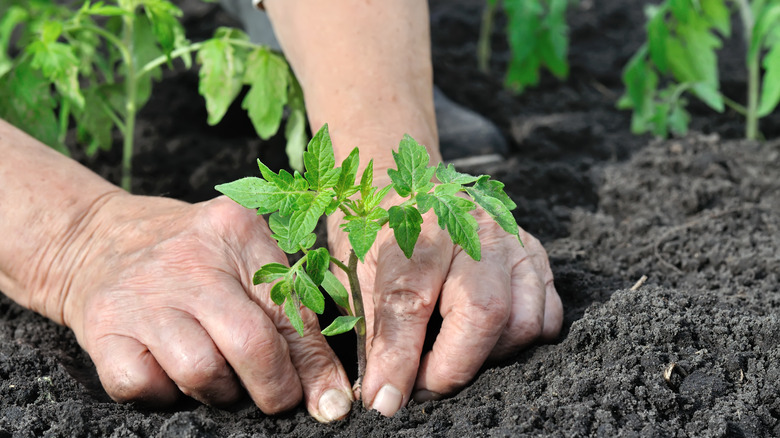What Is The Best Time Of Year To Plant Tomatoes?
Tomatoes are an extremely popular plant to grow from home because of their juicy and delicious fruit that can be used in a myriad of dishes. Planting tomatoes can be a tricky task to take on if you're unfamiliar with the preparation the seedlings require, however, once established, tomato plant care is rather simple. With a little research you can hone your skills and trust that your tomatoes will grow with ease. These plants love three things: sun, heat, and water. But, as with any good thing, too much can be detrimental to their health. So, you must learn where to find the happy medium.
Whether you're growing your tomatoes in containers or a garden bed, starting the seeds indoors will give your plants the best chance at survival. Seeds sown outdoors have a higher risk of failure, especially if you live in a colder climate. Even if you live somewhere that has the perfect temperature for tomato growth, insects and animals can still be an issue if they eat the seeds or disturb the soil. Additionally, tomato seeds planted directly in the ground do not receive the same head start that indoor seeds do. Most often, the former will have a later harvest time which can be problematic if you live somewhere with a short growing season.
Preparing your seeds and seedlings
To start seeds, you'll need a sterile seed starter mix, a heating mat, and a well-lit location. It's wise to prepare them as much as two months before you plan to transplant the seedlings outside. When you've gathered your supplies, fill a somewhat shallow container with your germination mix and place it on the heating mat. At this time, you can also set up an LED lamp above the container if you don't have a window to use as a light source. Next, plant the seeds into the soil about a quarter-inch deep. Moisten the soil and cover the container with a thin sheet of plastic. Keep it moist until the sprouts emerge, then remove the plastic and reduce watering as you reach the six to eight-week mark.
Alternatively, you can purchase seedlings from a local nursery instead of growing them yourself. If you plan to take this route, look for a starter plant that is smaller than 6 inches tall and wide. Tall and lanky seedlings as well as large or mature tomato plants will not transplant easily because they're most likely to suffer from transplant shock.
Plant your tomatoes as it gets warm
The best time of year to transplant your seedlings into the garden is when the outdoor temperatures in your area are consistently warm, and there has been no frost for a few weeks. Ideally, the temperature of the soil will have risen to about 60 degrees Fahrenheit, advises University of New Hampshire Extension. Tomatoes are very sensitive to cold temperatures, even after they have been growing for some time. Anytime the weather drops below that same temperature tomato plants may sustain injury from the cold. Typically, this delays or stunts their growth, but it can also cause catfacing on the first fruits. Per University of Massachusetts Amherst, catfacing heavily impacts the look of the tomatoes and puts them at higher risk for disease.
Once your seedlings are successfully planted in your garden, they should reach maturity after about 2 to 3 months. Problems may arise if their growing requirements are not met. Tomatoes need 6 to 10 hours of direct sunlight per day, and their soil must be kept consistently moist. You may harvest your tomatoes as soon as they begin to show a reddish color change. Failing to harvest early can lead to your fruit cracking, splitting, or being ruined by feeding insects or diseases. Even though your picked tomatoes appear to be unripe, they will finish changing color off the vine and taste perfectly delicious in just a few days from the protection of a windowsill.


